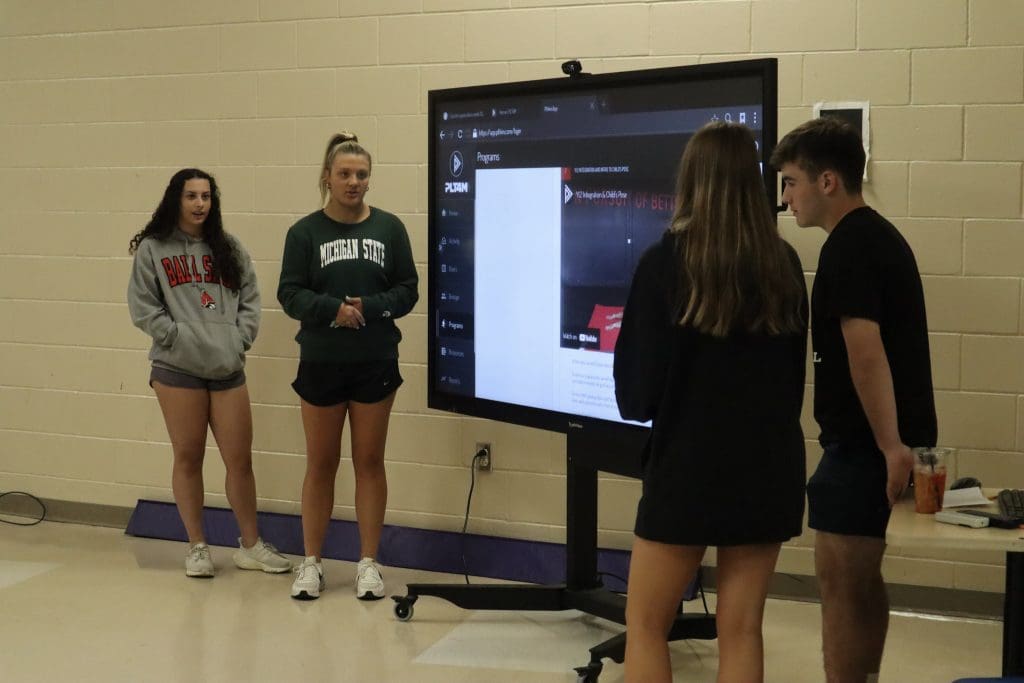As technology advances, it is becoming increasingly important for physical education teachers to integrate technology into their classrooms. Technology can provide various benefits to physical education classes, including improved engagement, increased access to resources, and better assessment of student progress.
In this article, we will explore the different ways physical education teachers can go about integrating technology in the classroom. In addition, we will look at some specific examples of how technology can be used in physical education classes.
Benefits of Integrating Technology In The Classroom For Physical Education
Integrating technology in the classroom can bring numerous benefits for students and teachers in physical education. The benefits of technology in the classroom include:
1) Personalized Learning Experience – With educational technology, physical education teachers can tailor and deliver PE lesson plans that address individual student needs, interests, and abilities. Integrating technology in the classroom can help students find meaningful ways to pursue lifetime fitness, health, and wellness.
2) Access To More Information – With the right technology in physical education, teachers can unlock a treasure trove of lesson plans, curriculum, and other resources. In addition, students also have access to a variety of digital tools that can support student engagement and deepen the learning process.
3) Increased Teacher Efficiency – Technology integration streamlines cumbersome administrative tasks like lesson planning, assessments, and grading. In turn, teachers have more time to focus their attention on the students in the classroom.
4) Real-Time Feedback – With technology, students can access real-time feedback on fitness metrics or assessments. As a result, students can understand and see progress and results that can increase motivation and engagement. Teachers can also utilize all of this data to provide feedback and insights.
5) Real-World Applications – Integrating technology in the classroom allows students to explore appropriate and effective technology practices. As we continue to live in a digital age, students need new ways to develop digital literacy.
Bonus Content – Take an inside look at technology for physical education in action!
Challenges and Concerns Around Integrating Technology in The Classroom
Despite all of the benefits of integrating technology in the classroom, physical education teachers are still concerned about bringing new technologies to the PE classroom.
First, some school districts have growing worries about integrating technology in school settings during the age of social media. Will technology use actually improve student engagement or pose an additional layer of distraction?
Next, student learning in physical education centers around movement and activity. How can students be physically active in class if they are glued to digital technologies during class time?
Finally, some teachers worry about what technology integration will do to their jobs. Will technology replace teachers? (We will answer all the concerns listed in this section later in this article, but we want to address this concern right away – NO! Technology will not replace teachers.)
While we can all empathize with teachers’ and school districts’ concerns about integrating technology in the physical education classroom, the benefits can far outweigh any challenges or concerns with the right educational technology and implementation.
Types of Technology in PE
When integrating technology in the classroom, physical education teachers might immediately go to wearables or other new technologies. But with high-quality online resources, you can use the types of technology your school settings already have access to.
For the purposes of this article, we will break up the types of technology into two main categories:
Full Class/Large Group Technology – TV’s, Projectors, Interactive Whiteboards/Smartboards, Etc
Personal/Small Group Technology – Smartphones, laptops, tablets, etc
Combining any readily available digital tools with online resources, schools can then consider the next steps in integrating physical education technology. With PLT4M, schools can successfully go about integrating technology in the classroom in a variety of ways.
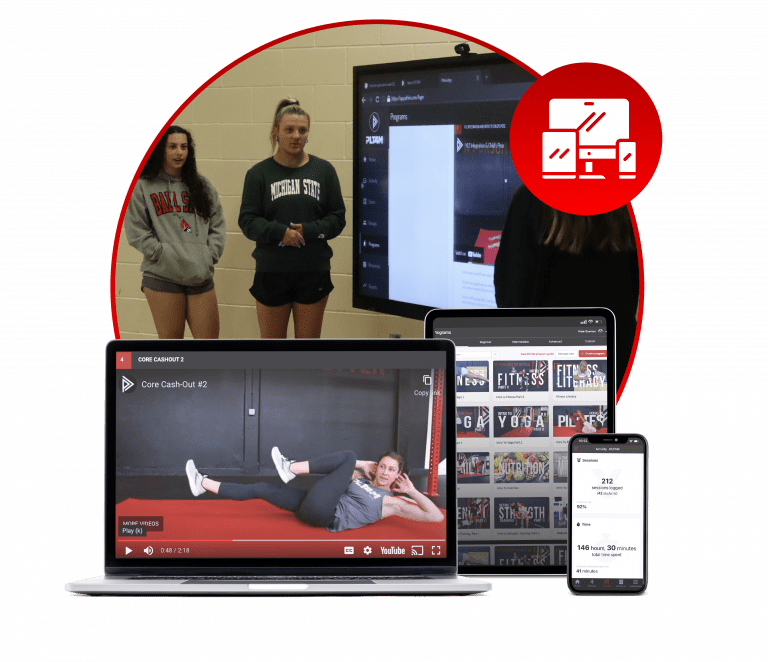
Lesson Plan Delivery
Lesson plan delivery is a great place to start for physical education teachers considering integrating technology in the classroom.
There is typically only one teacher for a large group of upwards of 50 students in a PE class. If a teacher is stuck at the front of the classroom leading any fitness skill or activity, they cannot provide one-to-one feedback and instruction.
Full Class/Large Group Technology – Tapping into a video display can be the easiest way for a teacher to go from lecturer to facilitator. By displaying a follow-along video, now the teacher can move about the classroom and provide hands-on guidance to students.

Personal/Small Group Technology – This can allow students to do different assignments and physical activities all in one class. These lessons can also be personalized through learning management systems like PLT4M. In addition, through an interactive app or system, students can log and track progress throughout class. This provides an added bonus for teacher insights.
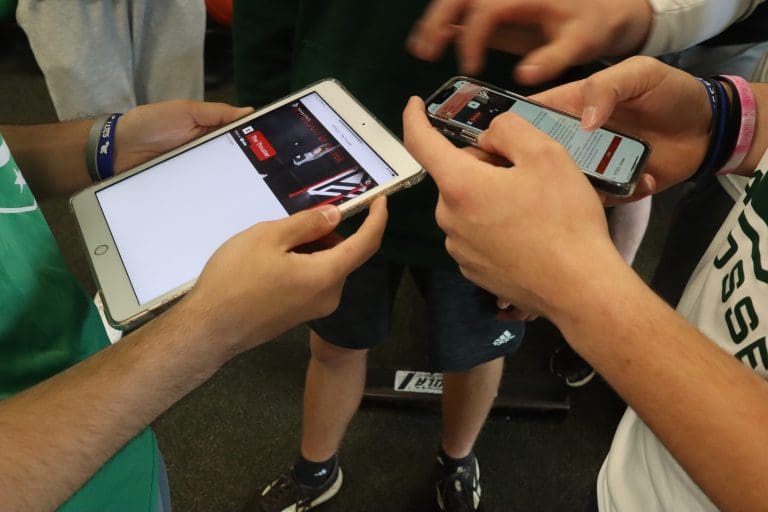
Bonus Tip – Sharing Personal Devices
And if social media and distractions are a concern with personal/small group technology, there are different ways to still personalize physical education without going completely 1-to-1. For example, with PLT4M, up to 5 students can share a “personal device” with a feature called rackview. This allows teachers to pair and group students using the instructional technology without having every student on a “personal device.”
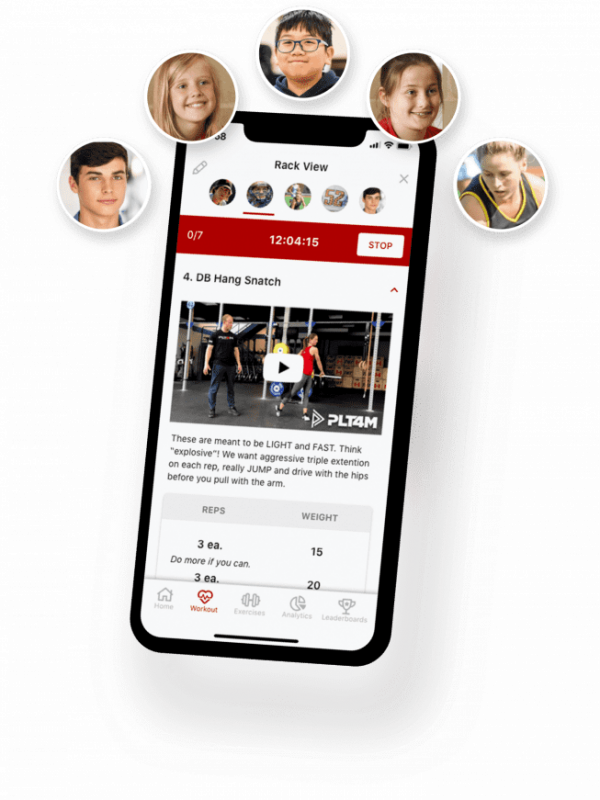
Example Integrating Technology at Canton – Modeling Tech Use
Integrating technology in the classroom doesn’t have to become a free-for-all all. Many schools take a progressional approach to student technology use.
For example, at Canton, the PE teachers take a 3 step approach to technology modeling in physical education.
In the first few lessons, the teacher leads with PLT4M on a monitor or projector. Students don’t use technology yet.
After a few lessons, students follow along on individual devices while teacher leads and models on a projector or device.
Finally, students work independently or in groups on devices without teacher leading lesson on projector.
In just a few weeks of the semester, students learn the educational process of using technology appropriately and effectively. After setting a foundation and clear expectations, technology in physical education becomes a tool for lessons and workouts rather than the dreaded distraction people fear.
Bonus Content – Take an inside look at Canton High School!
Assessments & Data Collection
With new tools like PLT4M, physical education departments can also enhance their assessments and data collection process when integrating technology in the classroom. Physical education teachers can ditch the pen/paper and collect data via digital tools.
Personal/Small Group Technology – Embedded within PLT4M lesson plans are different assessments, finishers, and worksets. All of these different data metrics can be logged directly by students. As a result, teachers can save time with data entry and engage students, giving them insights and access to their progress.
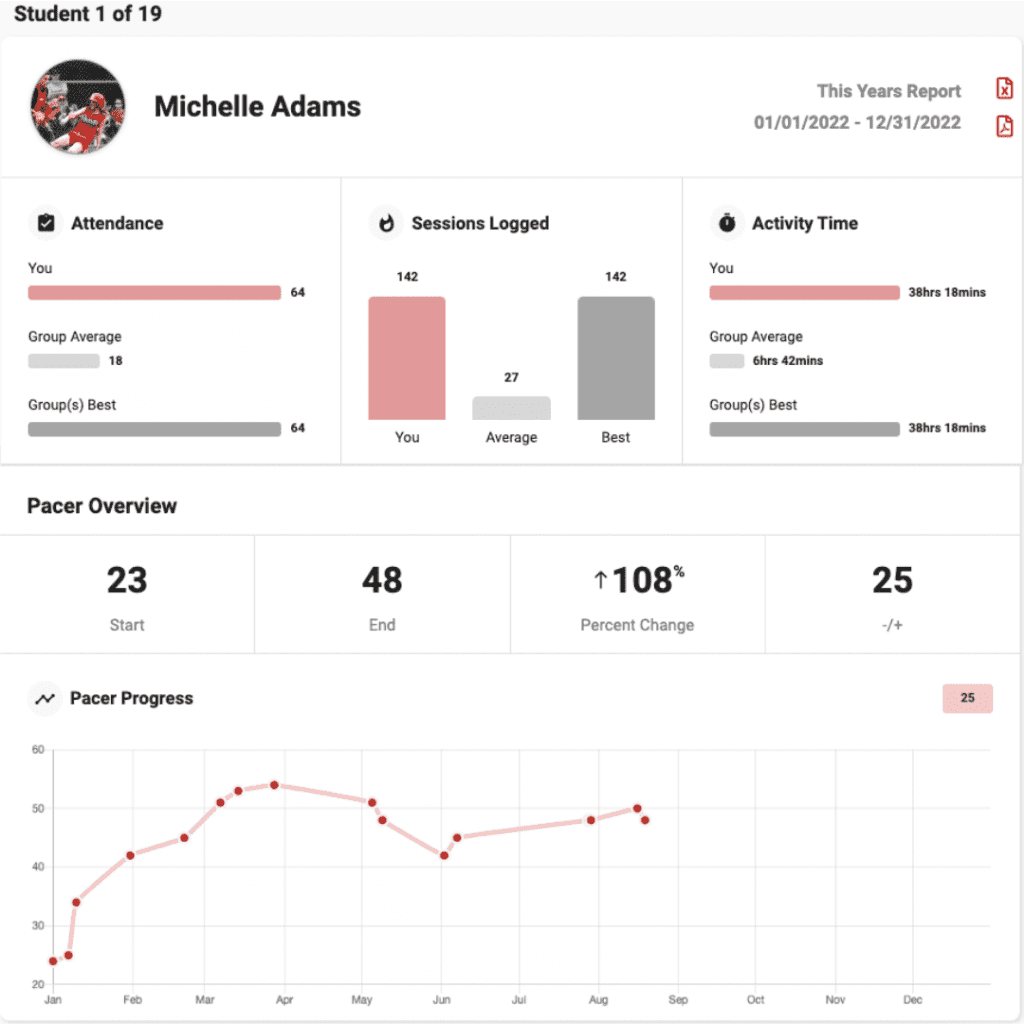
Full Class/Large Group Technology – While we strongly suggest letting students take ownership (to help PE teachers save time!), there are still options for PE teachers to log data themselves. This data can also be displayed on projectors and other class devices via leaderboards to highlight top performers and engage students with some friendly competition.
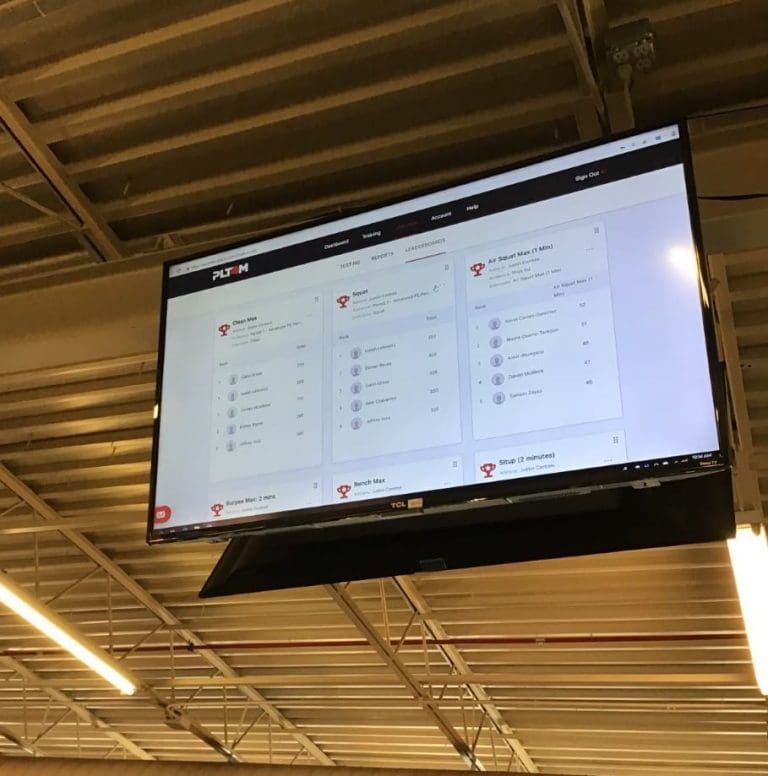
Example of Integrating Technology In The Classroom – Student Engagement
Today’s students want to know the why behind what they are doing. But, understanding the why can be challenging when the teacher controls all the information. Annie Hinkhouse says that this used to be the case at Reedsburg High School in Wisconsin,
“Before incorporating technology in PE, the teacher held all the information. As a result, students had no idea what their data or progress looked like because they couldn’t easily access it.”
But now, Reedsburg High School uses PLT4M so that every single student can have ownership in the learning process. Annie says that this has been one of the most significant driving factors for increased student engagement,
“With PLT4M, students can look back and see everything that has ever been tracked or measured. Because of this, students are more engaged and involved when they come to class. It moves PE from just being a class they show up for to a part of the day they are most excited about.”
Check out the full Reedsburg Story Here
Learn More on Integrating Technology in The Classroom With PLT4M
This article highlighted the power of integrating technology in the classroom for lesson plan delivery and assessments/data collection.
There are countless other opportunities to utilize technology tools like PLT4M to improve student learning in physical education.
For brevity, we won’t unpack each and every technology integration benefit. If you want to learn more, contact PLT4M for a free consultation on how schools integrate technology in the classroom with PLT4M.
Key Takeaways on Integrating Technology In The Classroom
Technology integration in physical education offers unlimited potential for teachers and students. And as digital tools continue to evolve, PLT4M will further evolve the possibilities.
For now, the key takeaways on integrating technology in the classroom include:
Physical education shouldn’t avoid technology integration. PE can benefit from digital tools just like any other subject within school.
With technology, physical education can offer a vast array of content and materials they otherwise might not consider including.
Assessments, data collection, and reporting can all be streamlined with technology integration. In addition, students can gain new levels of insight and engagement with new access to information.
Integrating technology in the classroom doesn’t mean students must be glued to their devices and not physically active. Instructional technology can improve and increase the quality physical activity time.
Technology use gives more flexibility, not less. As a result, PE teachers can customize technology integration to fit their goals, grade levels, and school settings.
